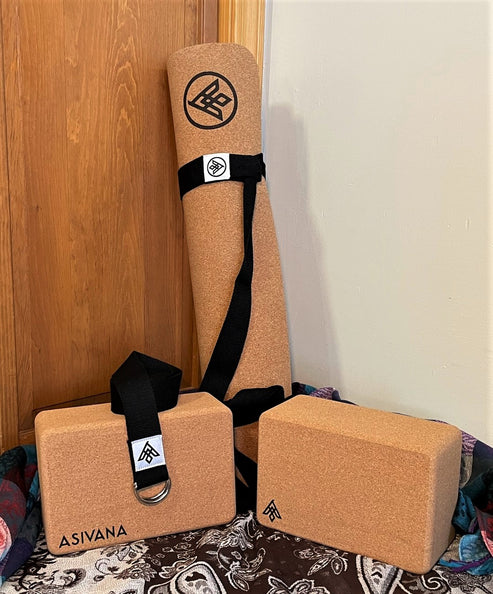What is Ice Yoga?
Jack UtermoehlShare
Ice yoga is a unique, invigorating, and cooling form of yoga practiced on ice or in a cold environment, such as a refrigerated room, ice rink, or an outdoor setting in winter conditions. This style leverages the benefits of cold exposure, combining traditional yoga practices with the challenges and advantages of a low-temperature environment.
Ice yoga aims to enhance mental toughness, improve circulation, and boost metabolism while offering a distinctive twist on conventional yoga practice. Ice yoga is a novel and fun practice. It may also be highly beneficial for practitioners wishing to escape the heat of summer.
What sets ice yoga apart is its integration of cold exposure with yoga, creating a practice that not only challenges physical endurance but also enhances mental resilience and focus. The cold environment requires practitioners to maintain greater concentration and control over their movements and breath.
Origins of Ice Yoga
The concept of cold exposure for health benefits is not new and can be traced back to practices such as cold water immersion and snow bathing in various cultures. The integration of these principles with yoga is a more recent development, inspired by the growing interest in the benefits of cold therapy and the popularity of extreme sports and fitness challenges.
Ice yoga draws on the principles of Hatha yoga, which emphasizes balance and control of the body's energies. The cold environment serves as a tool to enhance these principles, pushing the boundaries of traditional yoga practice to facilitate greater physical and mental discipline.
Ice Yoga Practice
The main principles of ice yoga include the combination of traditional yoga asanas, pranayama, and mindfulness techniques with the added challenge of cold exposure. This practice focuses on:
Cold Acclimatization: Gradually introducing the body to cold environments to build tolerance and resilience.
Mindful Movement: Emphasizing slow, controlled movements to maintain stability and prevent injury on ice or in cold conditions.
Breath Control: Using pranayama techniques to manage the body's response to cold and enhance inner fire.
Mental Toughness: Cultivating mental resilience through the discomfort of cold exposure.
Common Poses: Sun Salutations (surya namaskar)
Pranayama Practices
Ujjayi Breath (Victorious Breath): Generating internal heat and maintaining focus.
Kapalabhati (Skull Shining Breath): Energizing the body and enhancing circulation in cold conditions.
Ice Yoga Suitability
Experience Level: Mixed Level (Suitable for All)
Physical Demand: Physically Engaging to Athletically Intense
Mind-Body Engagement: Balanced Mind-Body to Physically Focused with Mindful Elements
Adaptability: Moderately Adaptable
Focus Area: Mental Toughness, Circulation, and Metabolic Boost
Notes on Ice Yoga
Practicing ice yoga can improve circulation, boost metabolism, enhance mental resilience, and evoke a sense of calm and focus. The cold environment helps reduce inflammation, increase fat burning, and strengthen the immune system. Regular practice can lead to improved physical fitness and mental toughness.
Make sure you bring layers of warmth. This includes thin gloves and thick socks with good grip. Consider picking up some dedicated yoga socks.
A thicker layer of gloves may be welcomed. Wear layers of clothing that you can remove and put on easily. Include a stretchy layer underneath with layers to go over. It’s advisable to also have a blanket you can throw over you when the class is coming to an end.
Similar Styles
Hot Yoga, Power Yoga, Hatha Yoga
Equipment Needed
Required: Yoga Mat, Warm Clothing (layers that allow movement), Yoga Socks
Nice to Have: Insulated Water Bottle, Hand and Foot Warmers
Optional: Yoga Blocks, Blanket
Support your yoga journey with high-quality, sustainable props designed for comfort and stability.
Crafted from eco-friendly cork for durability and a comfortable practice. $24 Includes everything you need to get started: a mat, blocks, and a yoga strap. $120Yoga Essentials for Your Practice


References
Resources
Wim Hof Method: Incorporates cold exposure, breathing techniques, and commitment to improve health and performance.
Cryotherapy and Yoga Fusion Classes: Some fitness centers and yoga studios offer classes that combine cryotherapy principles with yoga practice.






